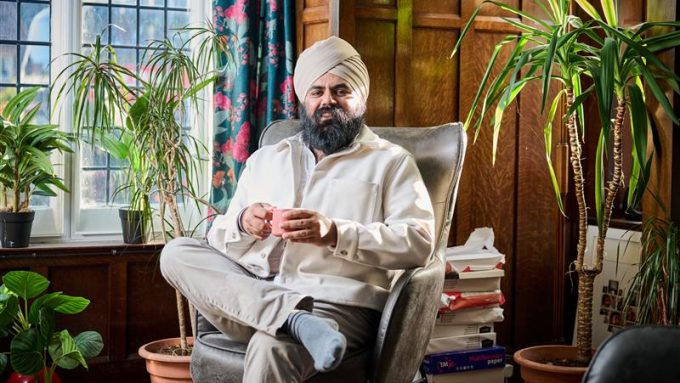
How 5G is transforming the logistics sector

By the 90’s this attitude had shifted significantly and the notion that you had to call ahead and agree on where to meet before leaving the house became a quaint memory. Phones became more lightweight and dropped in price considerably. Parents paid for peace of mind by equipping teenagers with pay as you go mobiles.
The feature to text, rather than talk, was quickly taken up providing users a new channel for communication where information or brevity was required beyond the more formerly conventional verbal human connection. Data rates on telecoms networks increasingly improved and by the end of the 90’s and early 00’s rates had reached Mbps speeds.
The protocols and equipment providing this were rolled out at the same time as 3G. This significant improvement enabled internet browsing and e-mail to become mainstay features on new handsets. New adjoint business models and applications began to develop around the 3G mobile telecommunications systems.
Companies began selling novelty ringtones and by 2003, in arguably a low point of cultural and technological overlap, “Crazy Frog” made it to number one in multiple countries. The impact of e-mail access being around the clock has, positively and negatively, impacted everyone with a mobile phone.
From 1G to 3G the public adoption of the technology has been around personal and business communication and information. With the advent of 4G improving data rates to ~100Mbps in 2008 completely new businesses and uses for networks became possible. Instead of simple communication from point A to B there is the possibility of real-time connection over long distances.
4G rates provided more than just streaming TV shows or music, they enabled useful amounts of data to be moved, processed, and responded to. The growth of “smart home” AI is one example where a human voice request can be processed and acted upon by a distant server (almost) seamlessly. The new business models and capabilities of a higher speed network become apparent if you look closer at a logistics set up like Amazon.
The Prime service they offer depends on the speed and volume of information that can be transferred and processed to coordinate the huge logistics and supply chain operations they control. Stock inventory, positions and locations of drivers and trucks, average speeds and warehouse picking – all data that can be recorded and leveraged to provide a faster or more cost-efficient service.
Rolls-Royce rents out its jet engines to airline companies and monitors their health and operation in real-time. This involves trillions of datapoints being transferred and analysed. These are perhaps extreme examples of the emerging “Internet of Things” where small and large devices are constantly gathering and collating data.
At the individual level people can now own a health monitoring watch (with reduced health insurance costs if they share their data) and even fridges that tell them when they are low on milk.
At a social level fast data transfer can give rise to what are termed “smart cities” where utility use, traffic flow, air quality and a diverse wealth of information can be monitored and usefully interpreted for the benefits of its inhabitants. Creativity and social experience are also transformed by faster network speeds from being able to host, now ubiquitous, meetings online to holding simultaneous concerts and attend them remotely.
The newest generation of telecom technology is termed 5G and operates at Gbps rates which will radically impact and alter established business models and engender new ones. This is significant for the development of “IoT” applications and use cases as devices can not only gather useful data but actively respond and react to it.
The West of England aspires to become a smart region and is already recognised as an IoT centre of excellence and home to the largest cluster of digital expertise outside London. Key to the region’s leadership when it comes to advanced connectivity is The Smart Internet Lab, led by Professor Dimitra Simeonidou at the University of Bristol, a place where new telecommunication and network technologies are being developed and tested.
Not merely in how the technology is implemented and performs but in how it impacts, interacts, and develops with individuals and larger society. The lab has developed the first 5G and quantum cryptography citywide test network in Bristol and has received over £100M in funding for various projects at the intersection of arts, healthcare, logistics and digital infrastructure.
Many of these projects explore the interface of social science with digital technology and much of the work is performed in a “Living Lab” environment.
The 5G Logistics project launched in January 2021 and runs for 14 months. Funded by the Department for Digital, Culture, Media and Sports (DCMS), the £5.2M project is a collaboration of 12 partners led by the West of England Combined Authority to look at new applications for private 5G and IoT networks in tracking and monitoring of a freeport environment. Specifically, the project aims to:
Demonstrate how 5G private network capabilities can offer efficiency and productivity improvements to the logistics sector (and more widely)
Show the potential of highly accurate and real-time location and condition tracking of containers and individual items in a freeport-freezone scenario
Improve road traffic management and improve air quality
Replace manually-intensive processes with 5G enabled autonomous systems
Bring SMEs, universities, and public bodies together to make strides towards the digital infrastructure of the future
Freeports are economic zones where the shipping of goods coming in and out of the country are largely exempt from tariffs. The UK Government expects freeports and their associated freezones, which can be up to 25 miles away from the port, to stimulate economic activity by attracting more trade through these areas and incentivising manufacturing.
The solutions being developed by the 5G logistics project will be key building blocks for products and services that will deliver efficiencies to the wider logistics sector – within the region and beyond and could help shape the way the UK’s 11 freeports, 8 of which will be in England, will function. The project is therefore working closely with Felixstowe port, which was awarded freeport status, and is leading its own 5G testbed project. Together, the projects are exploring new businesses use cases and systems that could be used by ports worldwide.
Dr Alex Mavromatis is the Solution Architect for the 5G Logistics project, working at the Smart Internet Lab. Before the project began, Dr Mavromatis spoke to many people within the general logistics industry about the problems they face. The feedback was that many of the existing systems for tracking containers and packages have not been updated in years. Realtime tracking is largely absent within the shipping container industry with paper-based systems still being relied upon to check off containers. Inventories include what’s being moved but cross-checking is difficult and significant time is spent by staff checking crates. The potential for gains in efficiency are huge as improved asset tracking and timing yield higher quality more cost-efficient services.
Overall operations being done every day can be significantly optimised and become more digital. Sensors can not only monitor containers but can provide information about the state of the goods in transit. Dr Mavromatis is currently fitting a test container with a host of radio-frequency identification (RFID) sensors as a proof of concept. A single container may seem like a small start but what works for one will work for many and the solutions that emerge will be rapidly scalable. The hard part will be in designing the network to efficiently sort and analyse the data.
Beyond tracking, there is the issue of security with over £200M of goods being stolen or otherwise lost in the UK. Globally, the security problem is valued in billions of pounds being lost every year. Though significantly improved asset tracking will greatly reduce the opportunities for theft, the 5G logistics project is looking at how high-speed networks can enable new security measures. Airborne drones, operating individually or as fleets, can provide significant visual coverage in a busy place like a freeport. Previously 4G systems have not had the speed or connectivity to support decision making and coordination of aerial drones, but private on-site 5G networks can make this a reality. The first tests of coordinated security drones will begin later in the year.
This project is one of many that the Smart Internet Lab is undertaking which explore how Internet of Things and high data rate network connectivity can be transformative. It can be easy to think of these advantages in telecommunications only in terms of affording individuals the ability to talk and share information in greater volumes. It certainly does provide these benefits but also brings revolutionary ways of doing business and emergent physical tools that were not possible previously.
The Business Fellow Network Wave 2 started in December 2020, having successfully run from 2019-20 in an initial wave. 14 fellows from 14 institutions across the UK are taking part in the current wave. This creates new collaborations and partnerships as well as increased industry engagement, entrepreneurship, and research impact.
If you would like to keep up to date with the work the Academic Engagement team are doing and any CPC opportunities sign up to our network.





